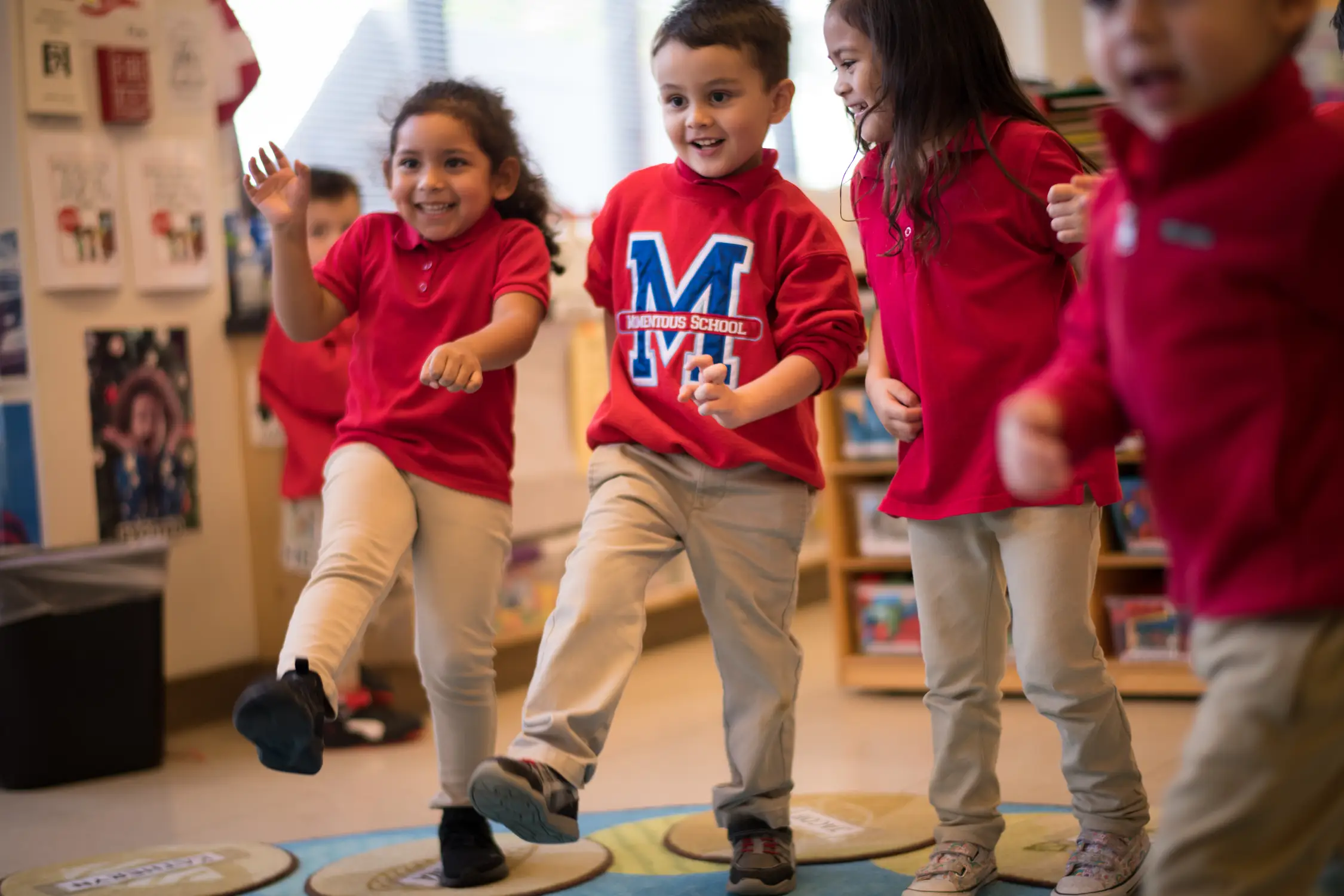There are countless research studies about the power and value of exercise. Exercise improves academic performance, protects memory, and reduces anxiety and depression. So we all know that it’s good to get our bodies moving. But how? Here are just a few simple strategies you could try with kids to get their blood flowing.
Take a little dance break with kids! Turn on the tunes and get the party started. Then quickly: STOP. Tell everyone to freeze in a funny position. This activity helps them practice tuning in for cues, listening, and being in control of their bodies. Plus, of course, it’s silly enough to elicit some good giggling.

The point of this version isn’t to exclude the kid who gets to the chair last. We modified it so that it becomes a team game where everyone is working together.
Here’s how to set up:
Now, play the music and have Group A dance around the chairs. Then, stop the music. Here’s where it is different from the original. As Group A runs to find the chair with their name/number on it, Group B starts counting. “1, 2, 3, 4, 5!” When everyone is seated in their chair, the counting stops. How many seconds did it take? Try it again and see if you can beat your time!
After Group A has run around the chairs three times, switch it up and give Group B a shot at the chairs.
This game is guaranteed to raise the energy in the room! It gets bodies moving and blood flowing to the brain. But even better, it fosters an important set of skills: teamwork, collaboration, effort. It only works when everyone is working together towards the same goal.
Sometimes it takes a lot out of a kid (especially a teen or pre-teen) to sit down and talk about their feelings with an adult. Try going for a walk! Just getting bodies moving is sometimes enough to break that barrier and get them talking.
We hope these simple little activities will help. What strategies do you use? We’d love to add to the list!
Share with
Related Resources